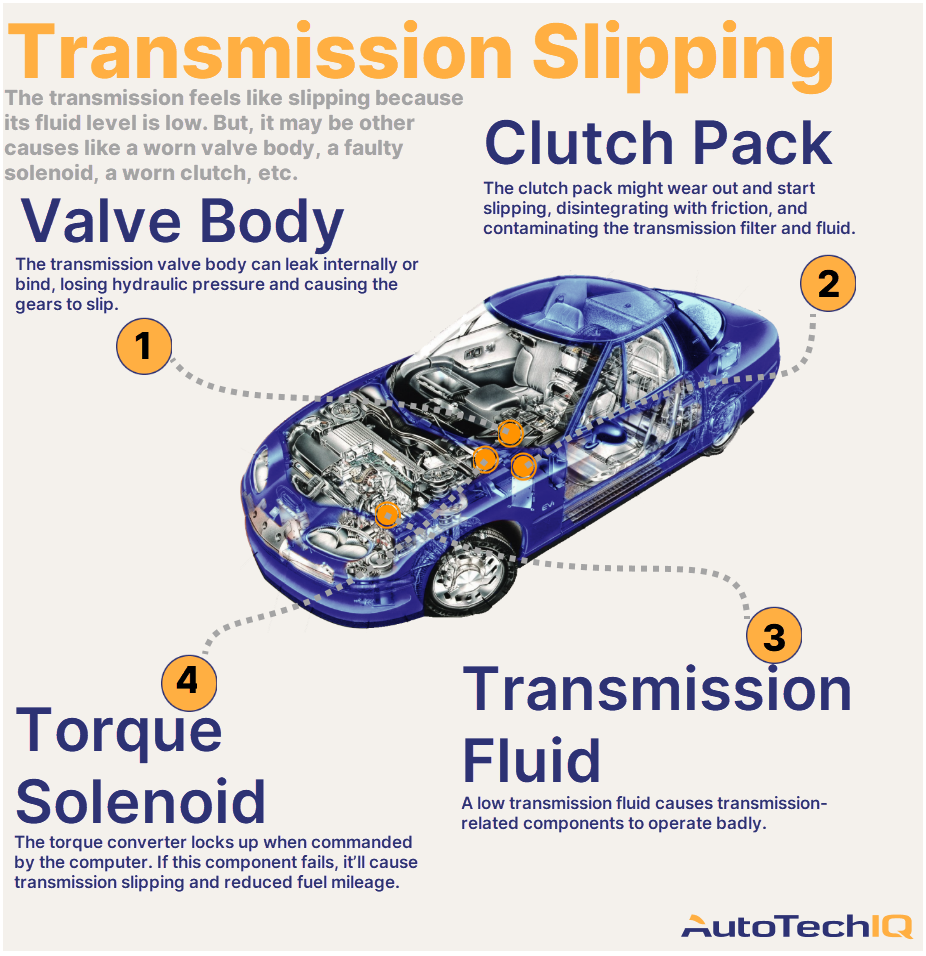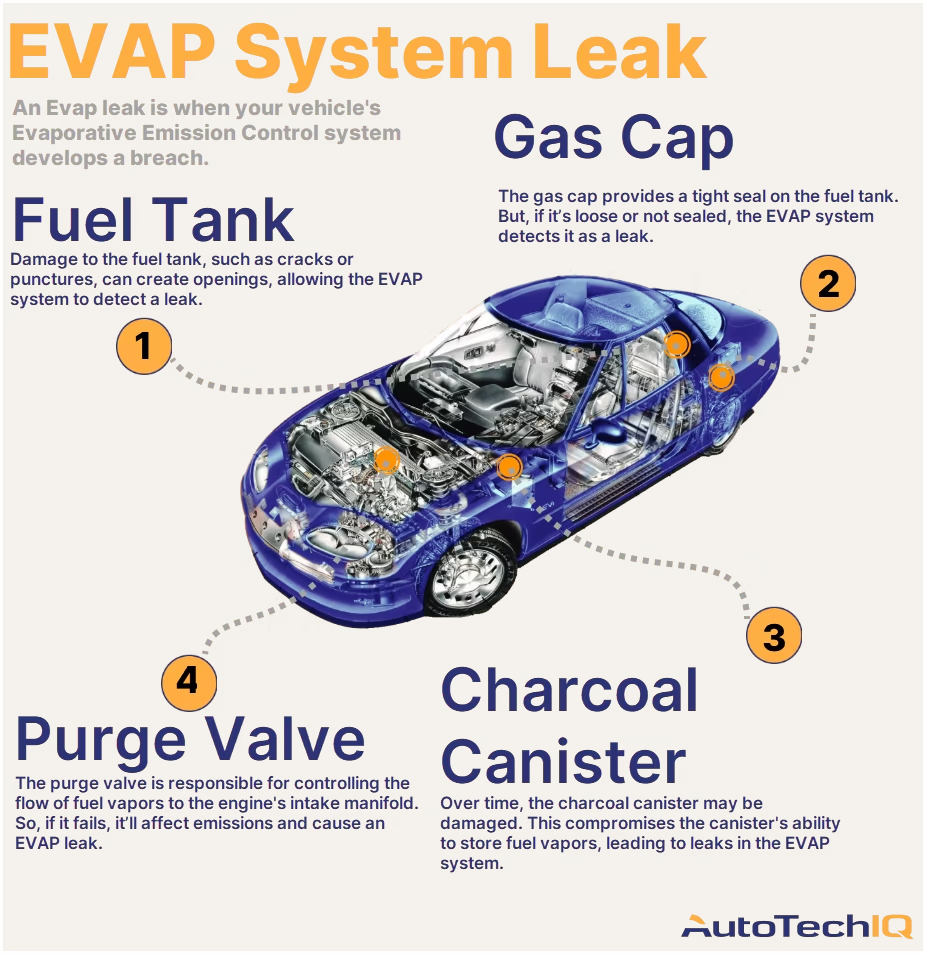Can an Evap Leak Cause Transmission Problems
Yes, an evap leak can potentially cause transmission problems, leading to issues with shifting and performance. Evap leaks can introduce contaminated air into the transmission system, disrupting its operation.
The transmission relies on a sealed environment to function properly, so any leaks can lead to malfunctions. Ignoring an evap leak can result in costly repairs and decreased vehicle performance. It is essential to address any evap system issues promptly to prevent further damage to the transmission and ensure the vehicle runs smoothly.
Proper maintenance and regular inspections are key to avoiding such complications and preserving the longevity of your vehicle.
What Is An Evap Leak?
What is an Evap Leak?
An Evap leak, short for evaporative leak, refers to the release of fuel vapor from the vehicle’s fuel system. The Evap system is designed to capture and store these noxious fumes and then recycle them back into the combustion process. When there is a leak in the system, these harmful emissions can escape, causing potential harm to the environment and affecting the vehicle’s performance.
Causes Of Evap Leaks
Evap leaks can be caused by a variety of factors such as damaged hoses, loose fuel caps, faulty canister purge valves, or deterioration of seals and gaskets within the system.
Symptoms Of Evap Leaks
Common symptoms of Evap leaks include the illumination of the check engine light, the smell of fuel vapors inside and outside the vehicle, decreased fuel efficiency, and difficulties starting the engine.

Credit: www.autotechiq.com
The Relationship Between Evap Leaks And Transmission
When it comes to vehicle maintenance, understanding the relationship between evap leaks and transmission is crucial. Let’s delve into how these two components are interconnected, starting with their impact on transmission fluid and vacuum pressure.
Evap Leaks And Transmission Fluid
Evap leaks can lead to contamination of transmission fluid, affecting its quality and performance. As the evaporative emissions system malfunctions, it can introduce contaminants into the transmission fluid, causing issues such as overheating and slipping gears.
Evap Leaks And Vacuum Pressure
Evap leaks can disrupt the delicate balance of vacuum pressure within the vehicle. This imbalance can impact the overall functionality of the transmission system, potentially leading to erratic shifting and loss of power.
Potential Transmission Problems Caused By Evap Leaks
Slipping Gears
Evap leaks can lead to slipping gears, affecting the smooth functioning of your transmission.
Delayed Engagements
Transmission delays in engaging gears may be experienced due to the impact of evap leaks.
Overheating
Evap leaks can contribute to transmission overheating, causing potential damage and malfunctions.
How To Diagnose An Evap Leak
When it comes to diagnosing an evap leak, it’s important to use the right techniques to pinpoint the issue. There are various methods to identify the source of the leak, including using a smoke machine and visual inspection. The earlier an evap leak is detected, the less likely it is to cause complications, such as transmission problems. Let’s explore how to diagnose an evap leak effectively to prevent potential issues with your vehicle.
Using A Smoke Machine
A smoke machine is an effective tool for diagnosing evap leaks in a vehicle. This method involves introducing smoke into the evap system to detect any leaks. The smoke is visible and can escape through any holes or cracks in the system, making it easier to locate the source of the leak. A professional technician can conduct this test, ensuring accurate and reliable results. The use of a smoke machine allows for a precise diagnosis, enabling targeted repairs to be carried out promptly.
Visual Inspection
Conducting a visual inspection of the evap system is another method to identify potential leaks. This involves visually examining all the components of the evap system, including hoses, connections, and the gas cap. Any signs of damage, wear, or looseness can indicate an evap leak. It’s essential to inspect each part thoroughly to detect even the smallest of leaks that may lead to transmission problems. Regular visual inspections can help maintain the integrity of the evap system and prevent potential issues from arising.
Steps To Fix An Evap Leak
The presence of an evap leak in your vehicle can potentially lead to transmission problems. It is important to address these issues promptly to prevent any further damage. When it comes to fixing an evap leak, there are a few key steps that you should follow to ensure a proper repair. This article will guide you through the process, step by step.
Identify The Leak Source
The first step in fixing an evap leak is to identify the source of the leak. This can be done by conducting a thorough visual inspection of the evap system components, such as the fuel filler neck, fuel tank, and hoses. Look for any signs of damage, cracks, or loose connections. Additionally, you can use a smoke machine or a handheld leak detector to pinpoint the exact location of the leak.
Repair Or Replace Faulty Components
Once you have identified the source of the evap leak, the next step is to repair or replace the faulty components. Common components that often need attention include the fuel cap, hoses, canister purge valve, and the fuel tank pressure sensor. If any of these components are damaged or not functioning properly, it is essential to repair or replace them to ensure a successful repair.
Verify The Repair
After repairing or replacing the faulty components, it is crucial to verify the repair. This can be done by performing a leak test using a smoke machine or a handheld leak detector. Check for any remaining leaks and ensure that the system is holding pressure properly. It is also recommended to perform a diagnostic check of the evap system using a scan tool to ensure no additional faults are present.

Credit: www.autotechiq.com

Credit: www.autotechiq.com
Frequently Asked Questions On Can An Evap Leak Cause Transmission Problems
What Damage Can An Evap Leak Cause?
An EVAP leak can cause various damages such as decreased fuel efficiency, engine misfires, rough idling, check engine light turning on, and potential damage to the catalytic converter. It’s important to get it fixed promptly to prevent further issues with your vehicle’s performance.
Can Evap System Cause Transmission Problems?
Yes, a malfunctioning EVAP system can cause transmission problems due to the impact on engine performance and fuel delivery. This can lead to erratic shifting and stalling. Regular maintenance and checks can help prevent these issues.
What Happens If You Don’t Fix The Evap?
Ignoring a faulty EVAP system can lead to decreased fuel efficiency, engine performance issues, and possible damage to emission control components.
Can I Drive With A Small Evap Leak?
Driving with a small EVAP leak is generally safe, but can lead to increased emissions and potential engine issues. It’s recommended to address the leak promptly to prevent further damage and maintain the vehicle’s performance.
Can An Evap Leak Affect The Transmission Of My Vehicle?
Yes, an evap leak can indirectly affect the transmission by causing the engine to run poorly and possibly trigger a check engine light.
How Does An Evap Leak Cause Transmission Problems?
An evap leak can lead to engine misfires and poor performance, which can put strain on the transmission system.
What Are The Common Signs Of An Evap Leak Affecting The Transmission?
Common signs include rough shifting, hesitation while accelerating, and a check engine light indicating a transmission or emissions-related issue.
Conclusion
An evaporative (EVAP) leak can potentially lead to transmission issues, affecting the overall performance of your vehicle. It’s crucial to address EVAP leaks promptly to prevent further complications with the transmission system. Regular maintenance and early detection of EVAP leaks can help in preserving the functionality of your vehicle’s transmission.

